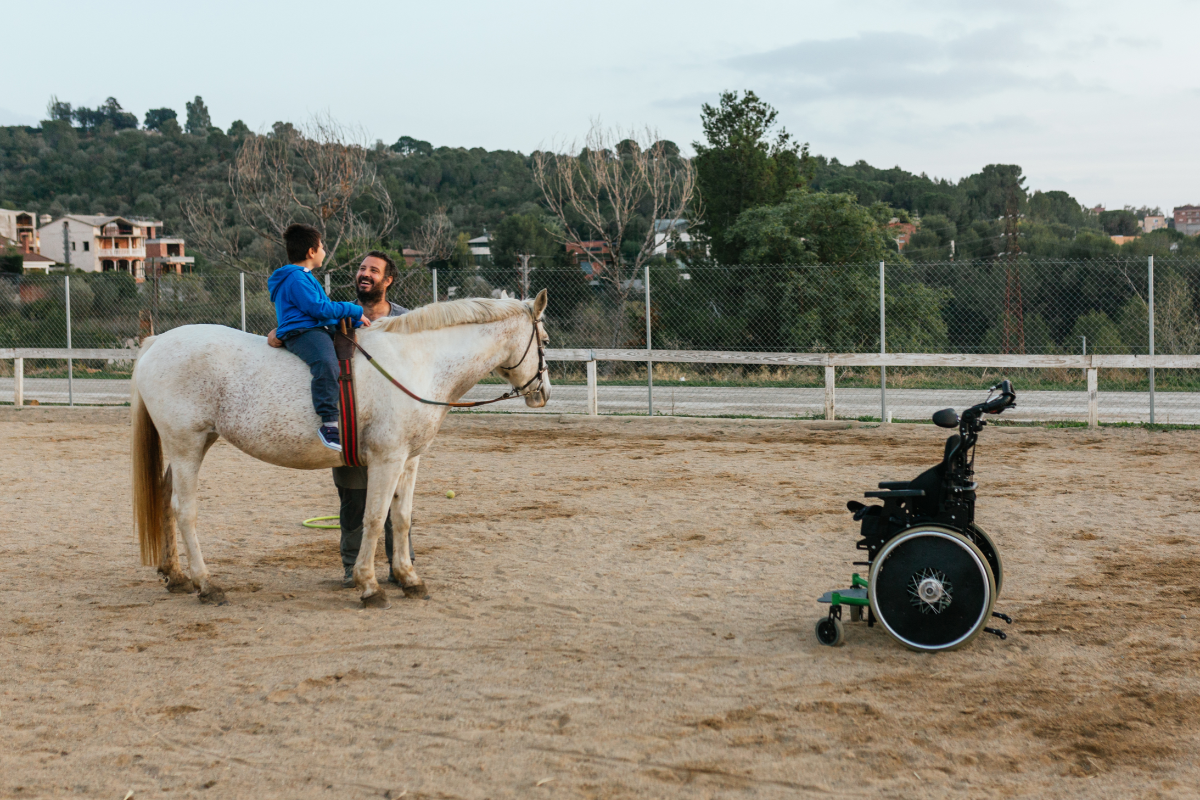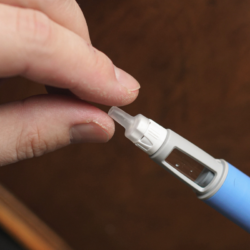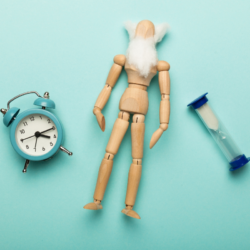Post-Traumatic Stress Disorder ( PTSD) is a complex psychological condition, often resulting from exposure to traumatic events. Characterised by hypervigilance, flashbacks and emotional disturbances, PTSD has a profound impact on the quality of life of those affected. While traditional therapeutic approaches, such as cognitive and behavioural psychotherapy, offer promising results, they are not always sufficient to meet the specific needs of each patient.
In this context, animal mediation, and more specifically support provided by horses, is emerging as an innovative and complementary alternative. Based on human-animal interaction, this approach aims to enhance emotional regulation, self-confidence and overall well-being. The horse, as a social and sensitive animal, occupies a special place in this approach thanks to its ability to perceive human emotional states and respond to them non-verbally.
What is PTSD?
Post-Traumatic Stress Disorder( PTSD) is a mental disorder resulting from direct or indirect exposure to a traumatic event. This includes situations such as death threats, sexual violence or serious injury. The symptoms of PTSD, as described in the DSM-5, include intrusive reliving, avoidance behaviour, cognitive and emotional changes, and changes in arousal and reactivity.
Historically, manifestations of trauma-related disorders have been documented since antiquity. Descriptions of “states of languor” or recurring nightmares after wars illustrate the first identifications of this psychic suffering. In the nineteenth century, researchers such as H. Oppenheim introduced the notion of “traumatic neurosis”, paving the way for a more precise classification. This concept evolved with studies of war neuroses, particularly after the two World Wars.
According to current criteria, the diagnosis is based on the persistence of symptoms for more than a month and their significant impact on quality of life and social or professional functioning. Risk factors include early trauma, a history of mental disorders and low social support. Conversely, early treatment, such as by the Cellules d’Urgence Médico-Psychologique (CUMP), and specific therapies such as EMDR or exposure therapies, offer encouraging prospects for treating this disabling disorder.
What does animal mediation involve?
Animal mediation, also known as animal-assisted intervention, is a method of improving human well-being through structured interaction with carefully selected animals. This practice is based on the idea that animals, through their presence and behaviour, facilitate care,learning and social rehabilitation processes. It includes therapeutic, educational and recreational interventions.
The first documented practices date back to the IXᵉ century, when birds were entrusted to patients to help them in their psychological recovery. This approach developed over the centuries, with initiatives such as the integration of animals into psychiatric institutions in the XIXᵉ century or their use with traumatised soldiers after the First World War. In the 1950s, Boris Levinson formalised this approach by introducing the concept of animal-assisted therapy, demonstrating its benefits on patients resistant to conventional therapies.
Today, animal mediation takes several forms: therapy,education, recreational activities and animal-assisted coaching. These interventions are based on specific objectives and involve a trio of beneficiary-animal-professional. They aim to improve cognitive, emotional and social skills, while taking animal welfare into account.
The horse, in particular, occupies a unique place in animal mediation. Historically, it was used as a working animal, but its status has evolved to that of companion and therapeutic partner, particularly in equitherapy practices. The horse stands out for its sensitivity to human emotions and its ability to encourage behavioural changes, particularly in the treatment of psychological disorders such as post-traumatic stress disorder (PTSD).
How can hippotherapy and equitherapy be used to treat PTSD?
The horse, with its emotional sensitivity and non-verbal interactions, plays a unique role in animal-assisted therapies, including equitherapy and hippotherapy, applied to the treatment of post-traumatic stress disorder (PTSD). These approaches harness the horse’s ability to create an authentic, soothing and transformative connection with the client.
In hippotherapy, the horse acts as a physical stimulator, thanks to its gentle, rhythmic, three-dimensional movements. These improve postural control, coordination and balance, while reducing the chronic pain often associated with PTSD. At the same time, these interactions reinforce body awareness, which is essential for reducing anxiety and restoring a sense of security.
Equitherapy, centred on the psychotherapeutic axis, enables the emotional dysregulations typical of PTSD to be addressed. The horse, as an emotional mirror, helps to develop emotional regulation, while promoting self-esteem, resilience and better stress management. Interactions such as grooming and riding encourage full attention and active engagement, crucial elements in overcoming dissociative symptoms and reducing hypervigilance.
The natural and structured environments of the sessions also provide multisensory stimulation, reinforcing relaxation and social integration. Finally, these practices encourage active coping, which is essential for improving resilience in the face of trauma, while facilitating a reassuring relationship with the animal and the therapist.
Thanks to its versatility, the horse is becoming a central player in psychological and physical rehabilitation, offering a comprehensive and promising response to the specific needs of PTSD patients.
Well-being and needs of mediator horses
Ensuring the well-being of mediator horses is a fundamental requirement in the practice of equine mediation, both for ethical reasons and to guarantee their effectiveness and safety. Horses are social, mobile and sensitive animals with specific needs that must be respected.
Basic needs include regular social contact with other horses, sufficient freedom of movement, and access to quality pasture or forage (1.5 to 2% of live weight in dry matter per day). These elements encourage prolonged chewing, which is essential for preventing stereotypy, gastric ulcers and digestive disorders. Constant hydration with clean, freely available water is also essential.
Horses should be housed in a way that allows them to rest in safety, with sufficient space for free movement and social interaction. Regular free-ranging in groups reduces the risk of accumulated stress or hyperactivity.
Training and education practices should be based on techniques founded on the principles of learning. The use of positive reinforcement is strongly encouraged to motivate horses and increase their cooperation. Gradual familiarisation with specific equipment and beneficiaries ensures safe and appropriate sessions.
Finally, regular monitoring of the horses’ physical and emotional state is essential. Tools such as the Cheval Bien-Être protocol can be used to objectively assess their condition, while taking care to limit the stress of the sessions. Respecting these principles not only guarantees a balanced horse, but also harmonious interactions with the clients.





